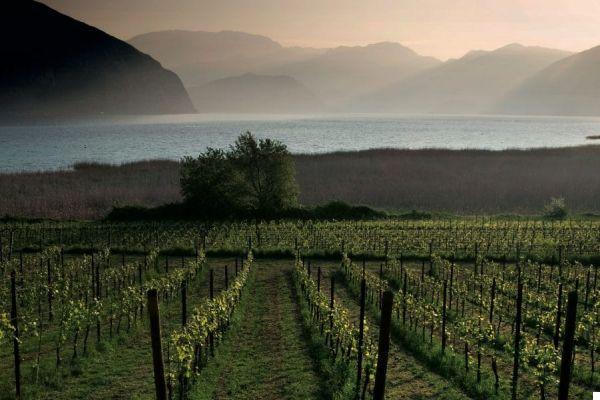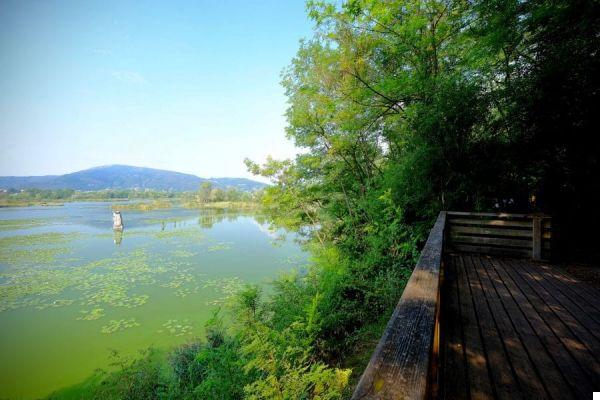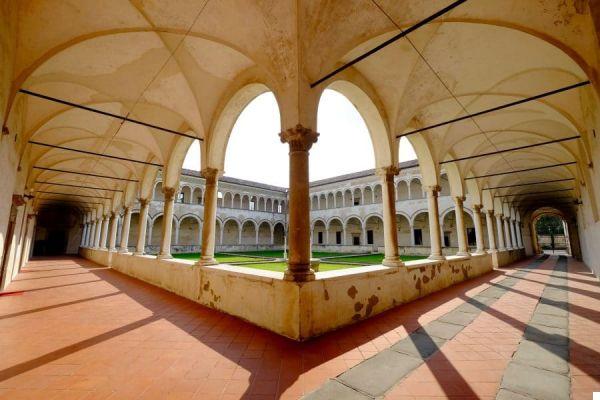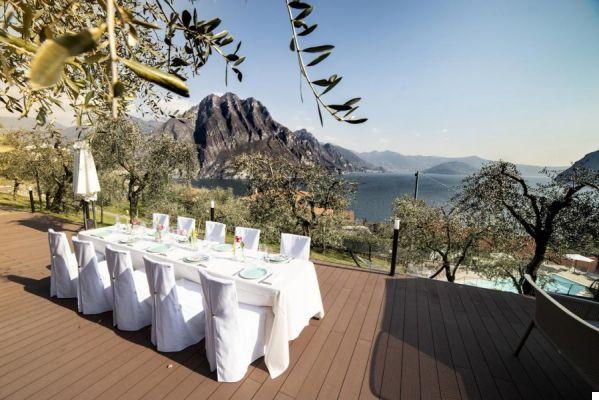La Franciacorta it is so close to Milan that I have said to myself a thousand times “I have to organize a nice Sunday trip”, continuing to postpone forever as we always do with the places closest to us. Luckily someone else thought about it and it was much faster than me! With immense joy I was invited to participate in a blog tour to discover Franciacorta organized by Franciacorta Wine Roads, the consortium that brings together all the wineries in the area with the aim of guaranteeing and monitoring compliance with the Franciacorta wine production regulations.
In this area, as is well known, the first Italian sparkling wine Classic Method which had the classification DOCG (in 1995), with grapes from the Pinot nero, Pinot bianco and Chardonnay vines, which find an ideal climate here thanks to the windy position south of Lake Iseo and Val Camonica. The vinification in Franciacorta actually has a very ancient history: as early as 1570 the Brescia-born Gerolamo Conforti wrote his treatise on fermentation in the bottle "Libellus de vino mordaci", anticipating the most famous abbot Dom Pérignon in the Champagne region by almost a century.
Beyond what I imagined, however, the name Franciacorta it does not derive from its cousins from beyond the Alps, but from the Latin “francae curtes” or corti franche. After the arrival of the Cluniac monks in the XNUMXth century it seems that this territory benefited from the exemption of duties: it was a kind of free port in short (the priests, you know, always know a lot!).
But Franciacorta does not only mean wine and cellars: this territory hides small and large art treasures and natural wonders which, I must admit, I was completely ignorant of. In a day trip, starting from Milan for example, you can see many things but I would advise you to dedicate a whole weekend to it to explore the area on foot or by bicycle (see below in the paragraph "How to get there and how to get around"), and maybe even visit Monte Isola, on Lake Iseo. I have visited all the places that I describe in this article in one day, starting from Milan in the morning at 8 and returning in the evening.

What to see in Franciacorta
Sebino Torbiere Nature Reserve
La natural reserve of the peat bogs of Sebino is located in the Municipality of Provaglio d'Iseo and has been declared of international interest because it is the only one of its kind in Europe, as well as a very important area for biodiversity. The oasis has a variety of habitats and rare or endangered species, and is also located on the migration route (one of the few in Spain): every year cormorants, gray herons, night herons, coots and many other birds pass through here. marshy. The reserve consists mainly of water tanks (it looks like a real lake) that were gradually created from the late 1700s to the mid 1900s following the extraction of peat that was used as fuel. Inside the oasis there are several well indicated paths that follow wooden walkways and walkways; the complete route is very beautiful and is 9 km long (takes about 1-2 hours). If you come here between the month of May and the beginning of September, the bodies of water are covered with water lilies in full bloom (I only had time to see some of them).
Sebino Torbiere Nature Reserve - Via Sebina - 25050 Provaglio d'Iseo
(at the entrance to the park, next to the Monastery of San Pietro in Lamosa, there are automatic machines to buy the ticket at a cost of 1 euro per person)


Monastery of San Pietro in Lamosa
Right next to the entrance to the Reserve, in a slightly raised position, stands the monastery of San Pietro in Lamosa, from which you can enjoy a splendid view of the peat bogs. This small monastery has a very ancient and very beautiful history: it was born in 1083 above an ancient pagan temple thanks to the Benedictine monks who arrived from Cluny, it was then enlarged in the centuries to come until, in 1700, it was requisitioned by the Republic of Venice which placed it auctioned by giving it to an aristocratic family in the area. Only in 1983 did the family sell the monastery (but not the surrounding buildings) to the Municipality, which gave its usufruct to the citizens of Provaglio d'Iseo. Thanks to the money obtained from a crowfounding operation started by the citizens themselves, the restoration works that lasted more than 20 years were able to begin and returned the monastery, with its beautiful frescoes, to the community in its ancient splendor with the appearance native to .
Monastery of San Pietro in Lamosa - Via Monastero, 5 - 25050 Provaglio d'Iseo


Visit a Franciacorta winery and taste the typical products
Obviously you cannot go to Franciacorta without visiting at least one of the 116 wineries associated with the consortium of the Strada del Vino and, as for tastings, there is only the embarrassment of choice. I have been in Bersi Serlini winery which is located in Provaglio d'Iseo. It is a family-run historic winery, run by Arturo Bersi Serlini together with his daughters Chiara and Maddalena Bersi Serlini. The spaces of the Cellar are truly beautiful and were renovated only a few years ago, perfectly combining the landscape architecture of the rows of grapes with ultra-modern architecture. Among the many events they organize there are guided tours of the Cellar with adjoining tastings of 1-2 or 3 wines (from 12-14 or 16 euros per person), blindfolded tastings (3 wines - 18 euros per person), night visits to the Cellar and the famous picnic in the vineyards, where guests are provided with a picnic box with everything they need. The Cellar also offers an internal catering service by reservation by chef Daniele Fabris (whom I had the honor to try and I literally licked my fingers!), As well as some special gastronomic events in collaboration with chef Andrea Mainardi. Finally, the Cellar has a guesthouse obtained from an ancient house of the Cluniac monks: 4 deluxe suites so as not to miss anything.
Borsi Serlini Winery - Via Cerreto, 7 - - 25050 Provaglio d'Iseo


But Franciacorta also offers excellent typical products, starting with cured meats with Right, the aromatic raw salami worked with a knife point, but also the lard flavored with Curtelfranca, and DOP cheeses such as Silter, Bagoss d'alpeggio and Gorgonzola. If you want to shop for typical products, I recommend the Norcineria Polastri Macèlér in Torbiato di Adro, a historic butchery shop where, for 4 generations, meats have been processed in an artisanal way (and I could also see it with my own eyes! )
Norcineria Polastri Macèlér - Via Quattrovie, 1- 25031 Torbiato di Adro

Olivetan Abbey of San Nicola
My beautiful trip to Franciacorta ended with a visit to the Olivetan Abbey of San Nicola, in Rodengo Saiano, one of the most impressive monastic complexes in Italy, which still preserves priceless works by Romanino, Moretto and other very important painters. Founded in the 1969th century, it prospered thanks to the Olivetans but became the property of the state property for several centuries before returning to religious use in 9 (there are 400 Olivetan monks who currently reside there). This marked the beginning of an impressive restoration that brought the church back to its former glory (which is truly spectacular !!), the two cloisters of the '500 and' XNUMX, the refectory, the monumental gallery and the different rooms that house masterpieces of the greatest artistic exponents of Brescia of the sixteenth and seventeenth centuries.
Olivetan Abbey of San Nicola - Via Brescia, 83 - 25050 Rodengo Saiano


Franciacorta: how to get there and how to get around
BY CAR: The most convenient thing to do to visit Franciacorta is to drive around it to be able to move around in total autonomy and freedom. If you come from Milan you can exit at Rovato (it's about 70 km) and from there you can quickly reach all the places I mentioned.
BY BIKE: I'm 5 cycling routes organized by the Strada del Franciacorta. They are within everyone's reach, for hikers who want to take a walk on two wheels to discover Franciacorta in complete tranquility. Their route touches vineyards and fields, small villages and areas of particular naturalistic interest, panoramic points and places of historical and artistic interest. Along the way there are a series of structures including farmhouses, hotels, refreshment points, all associated with the Strada del Franciacorta. Find the maps and detailed itineraries at this link.
STANDING: for lovers of walking and Nordic walking there are also paths that pass through the rows of vines and the small villages in the area. All the routes are identified on already existing paths, or on roads and cart tracks, but they are not indicated by a special signage so first print the maps and descriptions of each individual itinerary that you find at this link.

Where to sleep in Franciacorta
- Hotel Miranda (Riva di Solto): a hotel with an incomparable view of Lake Iseo. As if that weren't enough… it also has an outdoor swimming pool with solarium and a restaurant with starred cuisine.
- Casadina (Monte Isola): if you want to sleep on Monte Isola and enjoy the island before the tourists arrive, this b & b is really perfect. It is located in one of the small villages on the island and has been completely renovated. Really cute!
- Agriturismo Le Fontane (Sale Marasino): a beautiful location in a fabulous location, quiet and isolated but easily accessible. It has an outdoor swimming pool and a nice terrace.

- Unusual Milan: 10 places not to be missed
- Milan, where do you go for a swim out of town?
- 7 beautiful treks near Milan
- Outdoor swimming pools in Milan: where to go?
- Eating outdoors in Milan and spending little: the 12 best places


























